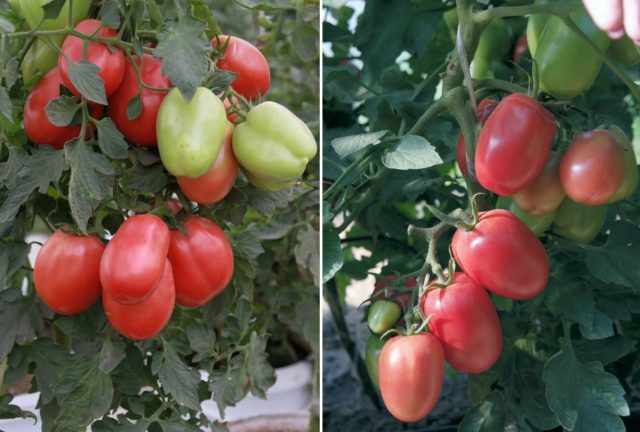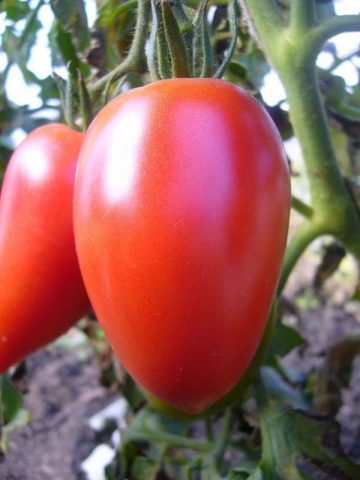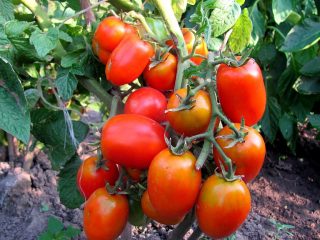Content
Tomato Pink Stella was created by Novosibirsk breeders for growing in a temperate climate. The variety has been fully tested, zoned in Siberia and the Urals. In 2007 it was entered in the State Register. The sale of tomato seeds is carried out by the copyright holder of the Siberian Garden variety.
Detailed description of the variety
Tomato variety Pink Stella belongs to the determinant type. A low-growing plant does not exceed 60 cm in height. The standard bush gives side shoots at the first stage of the growing season before the formation of brushes. Leave no more than 3 stepsons to form the crown, the rest are removed. As it grows, the tomato practically does not form shoots.
Tomato Pink Stella is a medium late variety, the fruits ripen in 3.5 months. The bush is compact, does not take up much space on the site. Judging by the photo of the Pink Stella tomatoes and according to the reviews of vegetable growers, they are suitable for growing in open ground and in a temporarily sheltered area. The plant is adapted to the cold spring and short summer of Central Russia, it tolerates a drop in temperature well.
External characteristic:
- The central trunk is hard, thick, stiff, dark green with a brown tint. Does not support the weight of the fruit on its own; fixation to the support is necessary.
- Shoots are light green; after fruit setting, the plant forms single stepchildren.
- The leafiness of the variety Rose Stella is medium, the leaves are dark green. The surface is corrugated, teeth are pronounced along the edge, densely pubescent.
- The root system is superficial, powerful, growing to the sides, fully providing the plant with nutrition and moisture.
- The flowering of the variety Pink Stella is abundant, the flowers are yellow, collected in inflorescences. The flowers are self-pollinated, 97% give a viable ovary.
- The clusters are long, the first fruit cluster is formed after 3 leaves, the subsequent ones - after 1 leaf. Filling capacity - 7 fruits. The mass of tomatoes does not change both on the first and on subsequent bunches. The filling capacity decreases, on the last bunch - no more than 4 tomatoes.
The first fruits ripen in mid-August if the crop is grown in an open area. In greenhouses - 2 weeks earlier. The tomato continues growing until the first frost.
Brief description and taste of fruits
Judging by the photo of the fruits of the Pink Stella tomato and according to the reviews, they correspond to the description of the originators. The variety produces tomatoes with a minimal acid concentration. The fruits are universal, they are eaten fresh, they are suitable for making juice, ketchup. The size of the Pink Stella tomatoes allows them to be used for preservation in glass jars. Tomatoes tolerate heat treatment well, do not crack. Grown in a private backyard and large agricultural areas.
External description of the fruit of the tomato Pink Stella:
- the form - rounded, slightly elongated, pepper-shaped, with slight ribbing near the stalk;
- peel - dark pink, thin, dense, tomatoes can crack in hot weather with a lack of moisture, the color is monochromatic, the surface is glossy;
- average tomato weight - 170 g, length - 12 cm;
- pulp - juicy, loose consistency, without voids and white fragments, has 4 seed chambers and a small amount of seeds.
Varietal characteristics
For a low-growing variety, the Pink Stella tomato variety gives a good harvest. The level of fruiting is not affected by temperature drops during the day and at night. But for photosynthesis, the tomato needs a sufficient amount of ultraviolet radiation, in a shaded place the vegetation slows down, the fruits ripen later, in a smaller mass. The cultivar requires moderate watering to prevent cracking of the fruit. Tomato Pink Stella prefers fertile neutral soils in lowlands; tomatoes grow poorly in wetlands.
If all requirements are met, the Pink Stella tomato ripens from the beginning of August to the end of September. One bush gives up to 3 kg. Ripening dates in greenhouses are 14 days earlier. The level of fruiting in an open area and in a greenhouse structure does not differ. 1 m2 3 tomatoes are planted, the average yield is 8-11 kg from 1 m2.
The priority in choosing the Pink Stella variety for planting on the site is the plant's strong immunity to bacterial and fungal pathogens. Zoned in Siberia, the tomato is immune to a number of common diseases:
- alternaria;
- tobacco mosaic;
- late blight.
The variety is intended for cold climates, most of the nightshade pests do not survive. The larvae of the Colorado potato beetle are parasitic among the main pests on the culture.
Pros and cons of the variety
In the process of experimental cultivation, work was carried out to eliminate the shortcomings, the Pink Stella tomatoes became favorites for many vegetable growers due to:
- a long growing season - the last harvest is removed before frost;
- strong immunity, immunity to infection;
- stable yield, regardless of a sharp change in temperature;
- compactness of the bush;
- standard growth - there is no need for constant pinching;
- the profitability of the variety for commercial cultivation;
- opportunities for cultivation in open ground and in protected areas;
- excellent taste characteristics;
- versatility of fruits in use, long-term storage.
The disadvantages of the Pink Stella tomato include the need to install a trellis; this measure is practically not required for determinant varieties. Providing the tomatoes with the necessary watering so that the integrity of the peel is not compromised.
Planting and care rules
Tomato variety Pink Stella is grown in seedlings. The seeds are harvested on their own or purchased in the trade network.
Growing seedlings
Sowing seeds is carried out 2 months before determining the seedlings on the site for further vegetation. In a temperate climate - approximately in mid-March, in the southern regions - 10 days earlier. Sequence of work:
- A planting mixture is prepared in equal proportion from peat, river sand, topsoil from a permanent place.
- Take containers: wooden boxes or plastic containers, at least 15 cm deep.
- The nutrient mixture is poured, furrows are made of 1.5 cm, seeds are laid at a distance of 0.5 cm.
- Pour warm water, fall asleep.
- From above, the container is covered with glass, transparent polycarbonate or plastic wrap.
- Cleaned in a room with a temperature of +230 C.
After the sprouts appear, the covering material is removed, the containers are placed in a lighted place, and fed with complex fertilizer. Watered every 2 days with a little water.
After the formation of 3 sheets, the tomato planting material is dived into plastic or peat glasses. 7 days before planting in the ground, the plants are hardened, gradually lower the temperature to +180 C.
Tomato care
For tomatoes of the Pink Stella variety, standard agricultural technology is required:
- The plant is fed for the first time during flowering with an ammonia agent. The second - at the time of fruit growth with phosphorus-containing fertilizers, during the period of technical ripeness of tomatoes, organic matter is introduced at the root.
- The variety is demanding for watering, it is carried out 2 times in 7 days, subject to a dry summer. Tomatoes growing outdoors are watered early in the morning or after sunset.
- The bush is formed in 3 or 4 shoots, the rest of the stepchildren are removed, the excess leaves and bunches that have bearing fruit are cut off, a support is established, and the plant is tied up as it grows.
- For the purpose of prevention, the plant is treated at the time of fruit ovary with copper-containing preparations.
After planting, the root circle is mulched with compost, organic matter acts as a moisture-retaining element and additional feeding.
Transplanting seedlings
Tomatoes are planted in an open area after the soil warms up to 150 C at the end of May, to the greenhouse in mid-May. Landing scheme:
- A groove is made in the form of a groove of 20 cm.
- Compost is poured at the bottom.
- Tomatoes are placed vertically.
- Cover with soil, water, mulch.
1 m2 3 tomatoes are planted, row spacing is 0.7 m, the distance between the bushes is 0.6 m. The planting scheme for the greenhouse and the unprotected area is the same.
Conclusion
Tomato Pink Stella is a mid-early variety of the determinant, standard type. The selection tomato was bred for cultivation in temperate climates. The culture gives a stable high yield of fruits for universal use. Tomatoes with a high gastronomic value.











